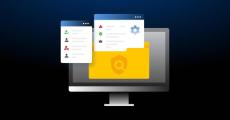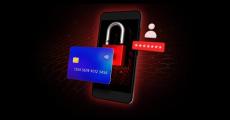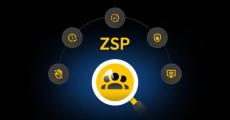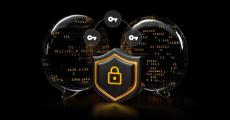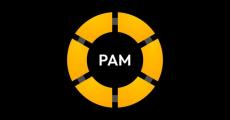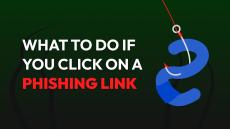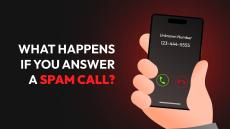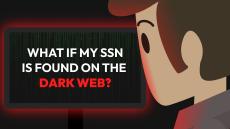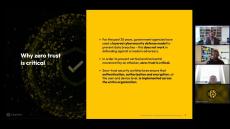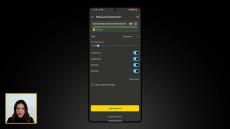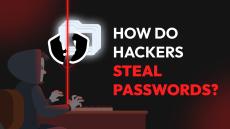|
By Ashley D'Andrea
An audit trail, also known as an audit log, records actions and operations within an organization’s system in great chronological detail. Audit trails can be used in various ways; specifically, in cybersecurity, they identify security violations by detecting who accessed data, what changes were made and when an action occurred.
|
By Ashley D'Andrea
Some common cyber threats facing the retail industry include ransomware attacks, social engineering, system intrusions and insider threats. The retail sector is often targeted by cybercriminals because of the valuable customer data it processes, including credit card information, Personally Identifiable Information (PII) and shopping patterns. This data is often collected and sold on the dark web for financial fraud or identity theft.
|
By Kim Howard
In 2024, the public sector faced a number of data breaches, highlighting the vulnerability of government agencies and public institutions in the face of evolving cyber threats. From leaked sensitive data to ransomware attacks targeting critical infrastructure, these incidents exposed significant gaps in cybersecurity measures. As cybercriminals grow more sophisticated, the stakes for protecting personal and national data have never been higher.
|
By Aranza Trevino
Your organization can achieve zero-standing privilege by following best practices such as enforcing least privilege access, implementing Just-in-Time (JIT) access and continuously monitoring and auditing privileged access. Following these best practices ensures that privileged access is granted only when necessary, and for the shortest duration possible, significantly reducing your organization’s attack surface and enhancing overall security.
|
By Ashley D'Andrea
The Federal Bureau of Investigation (FBI) recently issued a warning that iPhone and Android users should begin using encrypted messaging apps to protect the privacy of their communications from foreign hackers. The FBI issued this warning after Salt Typhoon – a Chinese hacking group – infiltrated American networks and began collecting data from phone calls and text messages.
|
By Ashley D'Andrea
The main difference between Just-in-Time (JIT) access and Just Enough Privilege (JEP) is that JIT access focuses on how long access is granted, which is only on an as-needed basis. On the other hand, JEP focuses on what access is granted. Although both strategies minimize the risk of standing privileges, JIT access and JEP function in different ways with different priorities. Continue reading to learn more about JIT access, JEP, their key differences and how they work together in access management.
|
By Ashley D'Andrea
The best way to handle increasing privileged access needs as your organization expands is to choose a Privileged Access Management (PAM) solution that grows with you. PAM refers to managing and securing accounts with access to privileged information, including sensitive systems and data. IT administrators, HR staff and other employees with access to sensitive information should be managed with a PAM solution to protect your data and reduce the risk of cyber attacks.
|
By Ashley D'Andrea
The best way to adjust your Privileged Access Management (PAM) strategy for growth is to choose a cloud-based PAM solution that scales with your organization. You may face many challenges when adjusting your PAM strategy as your organization grows, including more complex infrastructure, a higher number of login credentials to manage and increased security risks, so you need to have a flexible PAM solution.
|
By Ashley D'Andrea
Some benefits of using hardware security keys on iOS include protection against various cyber attacks, a smoother login experience and increased privacy. Since all mobile Apple devices use iOS, protecting them with Multi-Factor Authentication (MFA), such as hardware security keys, is important because requiring another way to verify your identity adds another layer of security.
|
By Ashley D'Andrea
No, you don’t need more than one Privileged Access Management (PAM) solution to protect your organization if you find one that encompasses zero-knowledge security, granular access control, session management and automated password rotation. Previously, your organization may have needed multiple PAM solutions for various tasks; however, KeeperPAM is a unified platform that provides centralized cloud management of privileged access, passwords, secrets and connections.
|
By Keeper
If you click on a phishing link you should immediately disconnect your device from the internet, scan your device using antivirus software and keep a lookout for suspicious activity and transactions on your online accounts. Learn more about what a phishing link is and what to do if you click on a phishing link.
|
By Keeper
2024 was a transformative year for Keeper Security, leading the charge in cybersecurity innovation, partnerships and industry recognition.
|
By Keeper
If you accidentally answer a spam call, scammers know your number is connected to a real person and can target you with more calls. These targeted spam calls will try to trick you into giving up your personal information which allows cybercriminals to steal your money, your identity and even your voice. Learn more about how cybercriminals can exploit you using spam calls.
|
By Keeper
If your Social Security number was found on the dark web, you should freeze your credit reports, lock your SSN, create a mySocialSecurity account and report your stolen SSN to the Federal Trade Commission. Let’s learn more in-depth about the steps you should take to protect your identity.
|
By Keeper
Malicious software, also known as malware, is a program that is designed to harm computer systems and devices. Cybercriminals target individuals with malware by creating spoofed websites, sending fake emails or messages, executing drive-by download attacks or deceiving users to download programs from a fake source. Learn more about how malware is delivered and how to prevent malware attacks.
|
By Keeper
Department of Justice webinar.
|
By Keeper
To generate a passphrase for a new or existing record on Android, tap the dice icon, select the dropdown menu next to “Type” and select Passphrase. You can customize your passphrase by setting the length, including capitals and numbers in the passphrase, and choosing from various symbols to separate the words. Passphrases can be up to 20 words long, with a minimum length of 5 words and each word including at least 3 characters. Check the box if you'd like to make your selections the default setting for all passphrases moving forward. Tap Use Passphrase or Copy Passphrase when you are done.
|
By Keeper
The Keeper Risk Management Dashboard is a powerful feature of the Keeper Admin Console that provides comprehensive security posture information covering end-user deployment, utilization, cloud configuration, and event monitoring. This critical data helps administrators ensure that risks are remediated and compliance is enforced effectively.
|
By Keeper
Hackers can steal passwords using a variety of methods including password cracking and social engineering. Learn how to tell if your password has been stolen and what you can do to mitigate the risk of having your passwords stolen.
|
By Keeper
Introducing Landscape Mode, Passphrases and Other Improvements to KeeperFill Intro KeeperFill is Keeper’s powerful, autofilling feature that works across all devices, allowing you to automatically and securely fill your usernames, passwords, passkeys, 2FA codes and more into the sites you visit.
|
By Keeper
Password Management remains a key requirement for users and organizations, with passwords still being ubiquitous, and thus imposing a major security risk to organizations. Modern Enterprise Password Managers (EPM) help in securely managing passwords and the secure login.
|
By Keeper
Keeper surveyed over 1,000 employees in various industries regarding their password-related behavior - the results were alarming.
|
By Keeper
2021 is set to be the Year of Ransomware. As attacks rapidly spike in frequency, increasingly eye-popping ransom demands are grabbing headlines. Consumers, once relatively shielded from any impact, are experiencing product shortages and difficulty accessing services as the organizations they do business with are knocked offline.
|
By Keeper
Over the last couple of years, cybersecurity has come of age. What many organisations saw as nothing more than an IT buzzword has evolved to become a function that is integral to ensuring business continuity. But what is the cybersecurity landscape reality like for businesses in the UK today? How exposed are they to the growing number of destructive cyberattacks?
- January 2025 (5)
- December 2024 (28)
- November 2024 (23)
- October 2024 (37)
- September 2024 (39)
- August 2024 (35)
- July 2024 (43)
- June 2024 (25)
- May 2024 (24)
- April 2024 (37)
- March 2024 (39)
- February 2024 (26)
- January 2024 (31)
- December 2023 (27)
- November 2023 (15)
- October 2023 (33)
- September 2023 (28)
- August 2023 (27)
- July 2023 (26)
- June 2023 (29)
- May 2023 (26)
- April 2023 (30)
- March 2023 (19)
- February 2023 (18)
- January 2023 (28)
- December 2022 (26)
- November 2022 (14)
- October 2022 (20)
- September 2022 (18)
- August 2022 (16)
- July 2022 (20)
- June 2022 (7)
- May 2022 (7)
- April 2022 (1)
- March 2022 (7)
Manage, protect and monitor all your organization's passwords, secrets and remote connections with zero-trust security.
Keeper is your first line of defense against identity breaches. For organisations that look for unparalleled cybersecurity, Keeper’s unique security architecture protects data and systems with a solution that is quick to deploy and easy to use. Keeper gives you visibility, control and compliance so you can be confident in your organisation’s security.
A Modern Privileged Access Management Solution for Your Entire Organisation:
- Password Management: Protect your credentials with ultimate security, visibility and control. Enable strong passwords, enforce with role-based policies. Top-rated mobile, desktop and browser apps enhance productivity for users.
- Secrets Management: Remove hard-coded credentials from your source code, automate management of credentials, API keys, database passwords and other secrets - integrates with your CI/CD pipelines and DevOps environment.
- Connection Management: Instantly access your infrastructure with zero-trust security. Provide DevOps and IT teams with instant access to servers, databases, RDP, SSH, Kubernetes infrastructure and remote desktops through a web browser.
Join millions of people and businesses that trust Keeper to protect their passwords and more.


